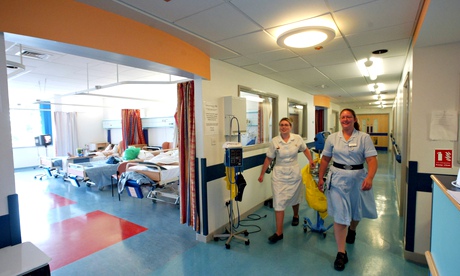
It was never Nice’s intention to mandate a minimum workers to patient ratio, writes Graham Turner. Photograph: Graham Turner for the Guardian
In the wake of the Francis inquiry and Berwick evaluation, Nice’s new risk-free staffing tips, for which I developed the statistical and financial examination, could have brought on surprise by stopping brief of setting minimal staffing levels. Nevertheless doing so would have been a blunder. It would have led to repeated mistakes across management of overall health providers, abdicating accountability for the appropriate completion of checklists and targets, although failing to acknowledge human knowledge.
Many have been hoping for Great to mandate a minimal personnel-to-patient ratio, although that was never the intention. The certainty that comes with establishing a minimal staff ratio is attractive it is basic to ascertain compliance and for that reason simple to hold companies to account. Nevertheless it would have been misplaced. The knowledge of this technique in America and Australia has proved misguided.
Even though sufficient staffing ranges are essential for protected and higher-high quality care, they are not enough to guarantee it. Targets, tips, and checklists permit organisations to abdicate responsibility for ensuring that they are doing the correct factors by just permitting them to report they are doing factors proper, ticking boxes rather than delivering care.
These new safe staffing recommendations demonstrate that gradually the tick-list mentality is altering, but they are not without having issues. The suggestions are, of program, primarily based upon the best obtainable evidence. But is this the correct evidence?
Hospitals are staffed at ward degree, composed of individual individuals with different and typically shifting needs. From shift to shift, the number, dependency and acuity of sufferers on any certain ward might adjust, and therefore so need to staffing.
The right staffing degree may also depend upon the ward speciality, its physical layout, or the time of day. Getting a single ratio would therefore be misleading, specially if this was set at a far more aggregated degree such as by the hospital or believe in.
Nice’s work in this area has however been plagued by a lack of very good high quality information and by the lack of present scientific studies. To date, research has both targeted on the macro level (hospital/believe in) efficiency or on micro level (patient) outcomes, but there is really little function accomplished at ward or clinical staff level exactly where the care is really carried out.
Similarly, most research are plagued by confounding variables such as not observing the good quality of hospital management.
Till there is collection and examination of ward-degree information, in conjunction with management efficiency, we will not know regardless of whether companies are performing the correct factor.
With no this detail, it’s not clear exactly what outcomes at a ward or patient degree are most sensitive to nurse staffing. Crucially, it is also unclear how the employees combine – the combination of registered and unregistered nurses – influences outcomes.
This is yet another spot the recommendations rightly keep silent on. Healthcare assistants (HCA), or unregistered nurses, are clearly not direct substitutes for nurses, but can have an essential role to perform. Nice’s new tips recommend that obtaining a lot more than eight sufferers to 1 nurse on a ward ought to set off a red flag that care may possibly not be satisfactory. Nonetheless, we ought to be searching at how HCAs complement nursing workers and add them to the mix.
Present designs treat all HCAs as equal, but some trusts provide higher education and growth, permitting HCAs to consider on far more very experienced or specialised duties.
A lot more perform is essential to comprehend what components of the HCA position can be moved up to this expert level. Right here, a lot can be realized from the developing planet. Lord Crisp’s fabulous book, Turning the Globe Upside Down illustrates a variety of these, this kind of as being in a position to train pretty much anybody to do C-sections.
While that is obviously an intense instance, we would do properly to contemplate the basic concept more, by taking individual HCAs and coaching them to do a specialised task at a significantly lower price than a entirely skilled nurse.
Nice’s suggestions and the recent inquiries have been created in the wake of surprising circumstances of bad care. It is precisely because of these instances that we require not only to assess staffing ranges, but to reassess what proof we use to decide very good care.
Our see of the NHS and of the nursing position is even now primarily based on the traditional picture of matrons in white caps, but we want to appear at the proof and rethink who is greatest placed to supply care of a substantial quality, and how to ensure that this also represents worth for cash.
Are you a member of our on the internet neighborhood? Join the Healthcare Experts Network to acquire typical emails and unique offers.
NHS staffing tips: it would be a error to set minimum amounts
Hiç yorum yok:
Yorum Gönder